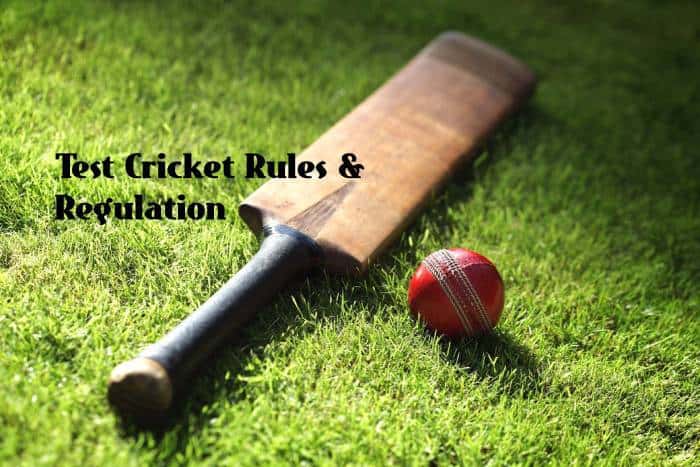
A Test match is the lengthiest form of cricket and the format. In the past, a Test match played six or seven days to get the final result. It is the most interesting format of cricket. In the test match, we can see the cricketer’s ability and concentration. Players need to follow the below list of all Test Cricket Rules and Regulation.
What is Test Cricket?
Test cricket is the longest format of the game of cricket and is hailed by many cricket greats as the purest form of cricket. It is considered to be the highest and most difficult standard of the sport as it tests the physical and mental skills of the players in 5 days. Test matches are played between national delegations that receive Test status by the International Cricket Council (ICC). Two teams of 11 players each play a four-innings match, which can last up to five days.
Natural Light Test Rules –
Test cricket was always played in natural light conditions and the lights were only able to complete a full day’s play. To improve the popularity of Test cricket, the ICC allows day-night Test matches to be played with pink balls. The first day-night Test match was played between Australia and New Zealand in 2015.
Day-Night Test Rules –
Now, the rules of day-night test matches are a bit different from conventional test matches. With the visiting board’s agreement, the home board will have to seek ICC approval to play day-night Test matches. The game is scheduled to be played for six hours per day on a contractual basis within the board. In the case of day-night Test matches, other rules have to be decided by agreement between the two boards.
Over Duration Rule –
In Test matches, a minimum of 90 overs a day is bowled or a minimum of 15 overs per hour is bowled except for a minimum day. You have to bowl a minimum of overs on the last day of the game. Scheduled overs may be reduced or increased if the match is affected by rain or any other disturbance.
New Ball Pickup –
If a team is bowled out or a team declares their innings in a day’s play, 2 overs will be deducted from the minimum over in day bowling. The new ball is available after bowling every 60 overs in the match. If the size changes and the loop test fails, the ball may be replaced by a ball of similar use condition.
DRS / Decision Review System Rules –
The objective of the DRS was to recheck the decisions of on-field umpires. The DRS rule was first launched in 2009 in the match between Pakistan and New Zealand. Initially, the teams were given a maximum of two reviews in an innings and then topped the review after 60 overs. Now, there are no top-ups in the review and there are 2 reviews of the teams that have not lost a team review in the case of the umpire’s call for an lbw decision.
Declare Follow on Rules –
If the follow-on is not executed or one team score is sufficient to prevent the follow-on from being executed, once the Team is dismissed or declared, the team bats again until it is eliminated or declared or the time expires. In this case, the game is drawn.
Draw Rules in Test –
If the total score in two innings of T-E is less than the score of another team from his innings, then the first team is declared the winner. Otherwise, the second team will have to bat again. If their total score is higher than the first team’s total, they will win the match. If they are eliminated before reaching the first team, the team will win the match. If it does not happen before the scheduled end of the match, it is a draw.
Finally, if both teams are out twice with the same combined total, the game is a tie. There have been only two relationships in the entire history of thousands of Test match games with relatively high scores in cricket. Both matches are considered to be the most exciting in the game so far.
i would like to ask if a team declares in a test match and are not all out what happens if you have done total runs in that inns does that make it void is it the same if you do total runs in say a 20/20 game and weather is a factor and the overs are cut down is this the same issue